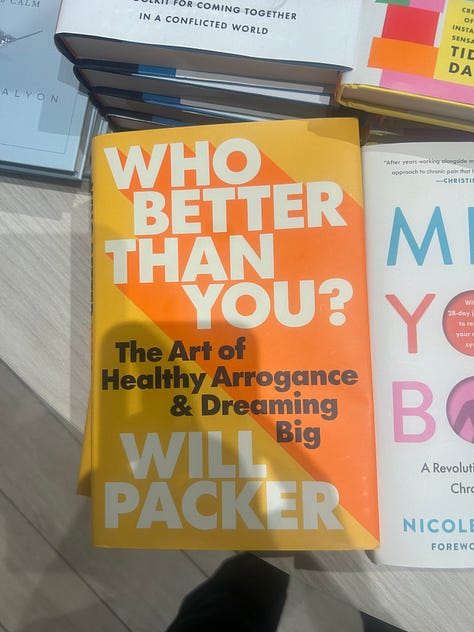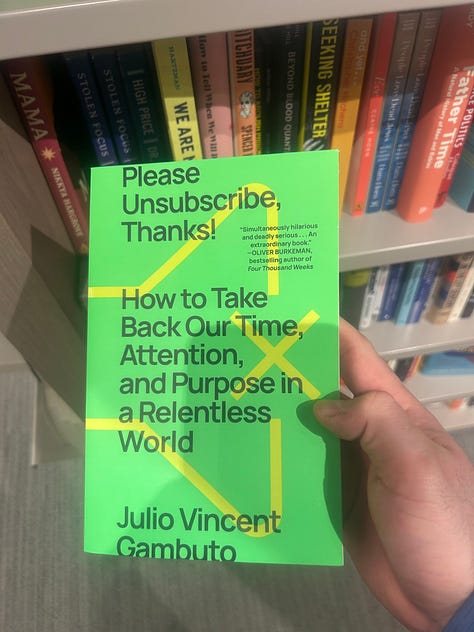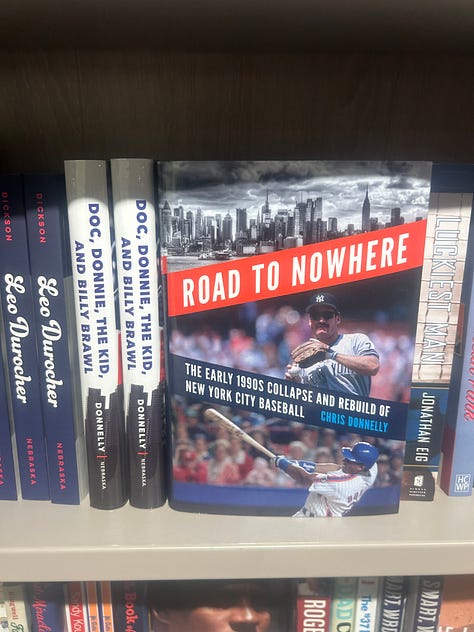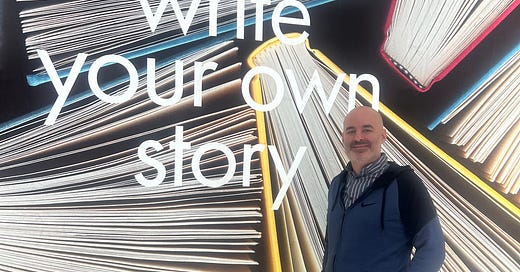I was at the Short Hills Mall last weekend, where even the escalators feel designer. I wasn’t looking for anything when I stumbled into Indigo—a store I’d never heard of. Five steps in, I was hooked.
The space was stunning. Clean wood, warm light, subtle jazz. It felt calm, thoughtful—like someone actually cared how the place made you feel.
There were candles named Sandalwood & Stillness, blankets folded like props in a magazine, and book displays that felt human, not algorithmic. I walked in with no plans. Suddenly, I wanted everything.
Indigo wasn’t shouting. It was inviting you to slow down, get curious, and be surprised.
Indigo felt like a bookstore version of TJ Maxx or HomeGoods—if those stores got a luxury makeover. Everything was beautiful. Maybe too beautiful.
But unlike TJ Maxx, where the checkout line is a shopping spree of its own, Indigo had no line, no carts, no urgency. Just quiet admiration. It was a showroom for a lifestyle you didn’t know you wanted. A museum of desire—with no actual buying.
This wasn’t just a bookstore. It was a department store. I think it used to be Saks. Now, it’s a place where people fall in love with items... and then scan them into their Amazon wishlist.
I found three books I’d never seen online. No ads, no influencers, no algorithm. I got excited. I bought two—on Audible. From my phone. In the store.
Indigo gave me the vibe. Amazon got the sale. That’s the disconnect.



Can you guess which books I bought?
Indigo’s Big Vision, Beautiful Execution—Wrong Market
Indigo isn’t some random pop-up. It’s Canada’s largest bookstore chain, founded in 1996 by Heather Reisman. But it was never just about books. From the beginning, the pitch was bigger: a “cultural department store for book lovers.” Not just titles, but taste. Not just shopping, but sanctuary.
They nailed the vibe. The stores feel premium. Every table looks like it’s been styled for Instagram. There’s Eucalyptus everything, linen throws, inspirational mugs, curated journals, and books—lots of books—arranged with the care of an art gallery. If aesthetics were revenue, Indigo would be printing money.
But vibe isn’t enough.
Because while they were perfecting mood lighting, Amazon was perfecting checkout. While Indigo doubled down on lifestyle goods, they missed the point: people still buy books. Books are still the core business. The thing they tried to downplay is the one thing keeping the roof up.
And here's the kicker—Indigo didn’t just lose market share. They lost momentum.
Revenue down 11% year-over-year
$20 million lost in Q3 of 2024
Stock down over 75% since 2021
Book sales? Still the main source of revenue
So yeah, the lifestyle pivot? A misfire. Reisman even admitted it.
And that store I wandered into at Short Hills? That wasn’t a pop-up experiment. That was Indigo’s attempt at a U.S. flagship. Premium location. High rent. Beautiful fixtures. Barely any purchases. It looked like success. It felt like serenity. It performed like a ghost town.
Why This Matters: Canadian Publishing Can’t Survive Without Indigo
Here’s what’s hiding under all the scented candles: Indigo is critical infrastructure.
It’s not just the largest book retailer in Canada—it’s the book retailer. It buys more books, sells more books, and markets more books than anyone else. If Indigo fails, it’s not just another bankruptcy. It’s a collapse of the Canadian publishing supply chain.
When their ecommerce went down during a 2023 cyberattack, publishers panicked. Book launches stalled. Sales cratered. Some titles never recovered.
Right now, Amazon and Indigo control the majority of Canada’s book sales. Indies only account for ~15%. If Indigo disappears, the entire market consolidates under a single vendor—and good luck getting shelf space there if you’re not backed by an algorithm.
So yes, Indigo’s future isn’t just a business concern. It’s a cultural one.
Indigo’s Response: Going Private and Rewriting the Script
In May 2024, Indigo’s shareholders approved a deal to take the company private. Translation: no more public market pressure, fewer headlines, and a chance to reset. The new owners? Gerald Schwartz (husband of Heather Reisman) through Trilogy Investments. It’s a family affair now.
The plan is to rebuild trust, bring books back to the center, and maybe—finally—align the business model with what actually sells.
Why It’s Still Not Working: The Vibe Is Wrong for This Economy
Let’s be honest. The timing couldn’t be worse.
Tariffs and inflation make lifestyle goods more expensive to source and sell
Malls are no longer discovery zones—they’re errand machines
The 2025 Edelman Trust Barometer shows trust is low, patience is lower, and wallets are staying closed
Calm is nice. But clarity and value are nicer.
The MAC Breakdown: Where Indigo Went Off the Rails
The Marketing Accountability Council (MAC) calls this brand theater: when the story’s good, but the structure is broken.
Let’s audit the store against MAC’s core values:
Truth-Seeking? Only after they lost money did they admit books still matter.
Transparency? Buried under Eucalyptus and soft jazz.
Accountability? Too little, too late. The pivot should’ve been course-corrected years ago.
Sustainability? Ironically, books were the only sustainable SKU.
Urgency? Missing. They let Amazon close sales inside their own store.
Indigo doesn’t have a store problem. It has a conversion problem.
Final Thought: Discovery Without Purchase Isn’t Retail. It’s Scenery.
Indigo makes you feel something. But they don’t make it easy to act on that feeling.
At Short Hills, I was fully immersed. I wanted to buy. But then I didn’t. And if they can’t convert someone like me—a reader, a shopper, a fan of the brand they want to be—then who exactly are they converting?
To win, they’ll need to stop being an experience that fuels Amazon’s checkout button—and start being the place where inspiration actually becomes action.
Until then? It’s just very expensive ambiance.





Great post